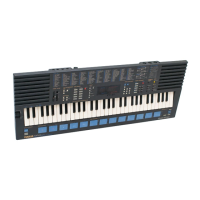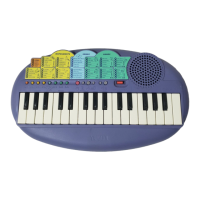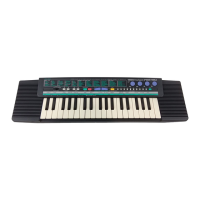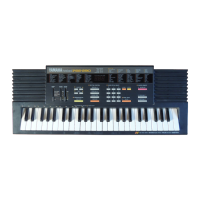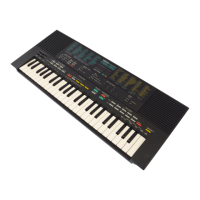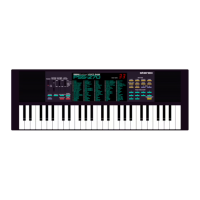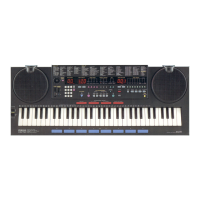
Do you have a question about the Yamaha PSS-680 PortaSound and is the answer not in the manual?
| Number of Keys | 61 |
|---|---|
| Voices | 100 |
| Rhythms | 100 |
| Accompaniment | Auto accompaniment |
| Display | LCD |
| MIDI | Yes |
| Headphones | Yes |
| Effects | Chorus |
| Power | Batteries |
| Key Size | Full Size |
| Polyphony | 12 notes |
Explains the manual's structure and how to use it for clear understanding.
Guidelines for safe handling, avoiding damage, and proper maintenance of the instrument.
Details on main sections like Power, Voice/Style Select, Rhythm Control, and MIDI.
Instructions for powering the unit, inserting batteries, and basic operation.
How to play the built-in demonstration song to hear capabilities.
How to select instrument voices and rhythm styles.
Using tempo, rhythm control, and orchestration for accompaniment.
Explanation of the instrument's core sections and their interplay.
Features like Transpose and Song Memory for simpler playing.
Overview and operation of six sound effects: Vibrato, Sustain, Reverb, Portamento, Chorus, Duet.
Adjusting parameters like Transpose, Tuning, and Melody Volume.
Choosing rhythm styles and controlling patterns with pads.
Adjusting tempo and understanding beat indicators.
Using percussion pads, sets, and the Synchro Break function.
Recording, editing, and playing custom rhythm patterns.
Explanation of Normal, Single Finger, Fingered modes and orchestration options.
Detailed guides for playing chords and accompaniments.
How to use the Duet feature for harmonized performances.
Recording, storing, and playing back melodies.
Recording and playing back chord progressions.
Introduction to FM synthesis, voice parameters, and creating sounds.
Detailed explanations of synthesizer parameters like Attack Rate, Decay Rate, Frequency.
Explanation of MIDI and its communication standards.
Details on Keyboard Assign and Sound Source modes, channel control.
Practical examples of connecting the PSS-680 to other MIDI devices.
Procedure to reset all internal settings to default values.
Technical specifications including keyboard, voices, styles, and dimensions.
Details on data formats for voice, melody, chord, and rhythm patterns.
Chart detailing MIDI message transmission and recognition.
FCC compliance statement and interference precautions for US users.
